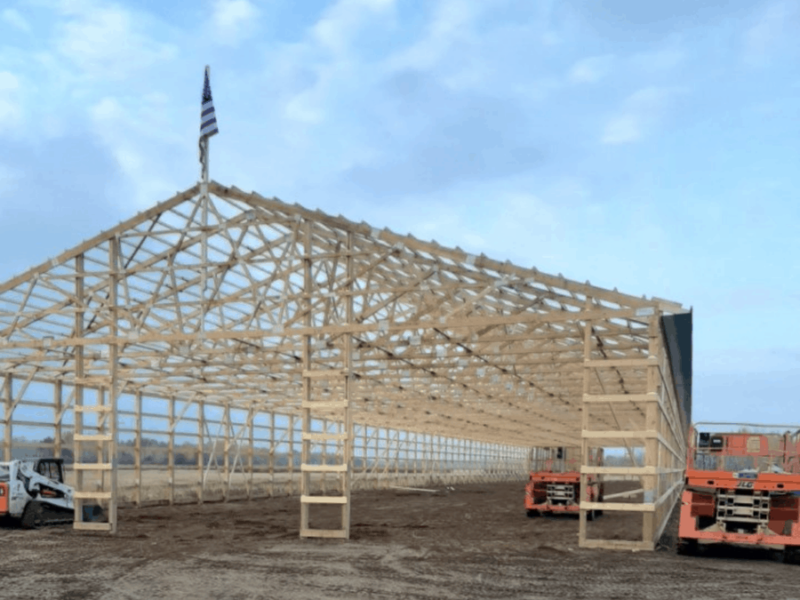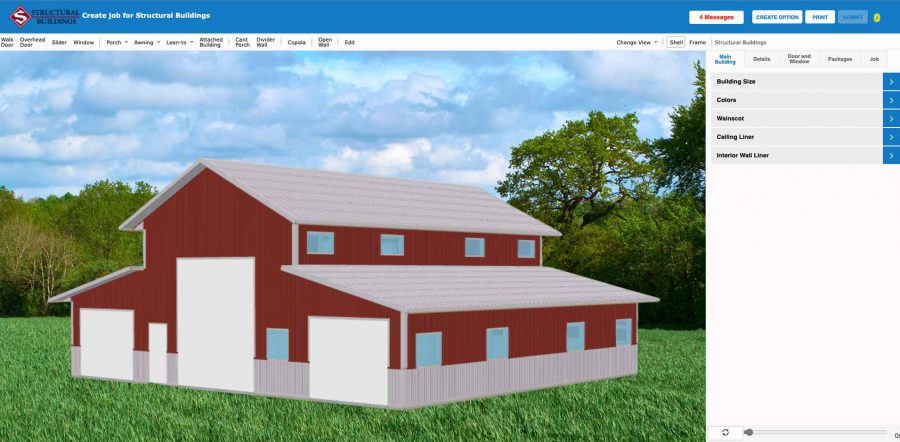Troy here with Structural Buildings. Let’s talk Construction! Today, I want to talk specifically about post-frame buildings and more specifically, the posts, or columns, themselves.
Today’s typical post-frame column is not your grandpa’s column. When your grandpa built his barn at the farm, he cut down some logs, took out his barrel of drain oil or tar, slopped up the logs, and threw them in the ground.
This actually worked pretty well, but eventually, the logs did begin to rot. Today’s post-frame columns are much different. Looking closely at a post-frame column, you’ll notice some greenish wood and some naturally colored wood. The greenish wood is laminated, kiln-dried, treated pine designed to go into the ground. It has a 65-year warranty. That’s not forever, but it is a very long time! Anything green and below is designed to go into the ground. Everything else can be above ground and untreated, though in some cases the exteriors of the posts do need to be treated.
Columns are typically installed by auguring them into the ground. We pour concrete into the hole and shove the columns into the ground. Then, we add back the materials into the hole, tamp it down, and we have a strong column. The column sits on top of the concrete, below the frost line. That way, the building does not shift or move. To construct the frame of a building, we install a line of posts and tie them together with framing and trusses for a rock-solid building. It’s a great way to build.
In some cases, you may have soil issues or other situations where we need to tie onto another building. If so, we can use the same columns with a different installation method. We bolt the columns into steel brackets we’ve set into a slab of poured concrete. While this installation method may allow the building could flex with the frost, it is still structurally sound and a common building practice.
Sometimes, you may have a combination of brackets to accommodate columns of different thicknesses. This may be the case if you’re building a big garage that requires stronger support than the building we’re tying into.
Depending on the type of building you need for end-use, post-frame construction may be the best fit for your project. To discover your construction options, contact Structural Buildings today. Contact us to let us know how we can help you out. Thanks!


